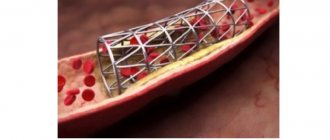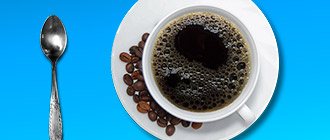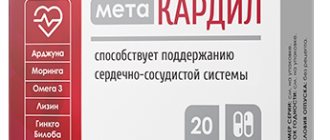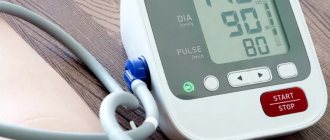For many, tomatoes are just an ordinary vegetable. In fact, the product is incredibly beneficial for the body, including the cardiovascular system.
Eating tomatoes reduces the risk of developing cardiovascular diseases, helps cleanse the blood and blood vessels of toxins, and normalizes blood pressure.
Let's consider in what form tomatoes should be eaten to maintain the health of the heart and blood vessels, in what quantity and how often hypertensive patients can eat them.
Medicinal properties of tomatoes
The benefits of tomatoes for the human body have been proven by more than one scientific study. It has been established that the vegetable has a wide range of beneficial properties:
- Strengthens the immune system, activates the production of leukocytes.
- Has anti-inflammatory, antibacterial effect.
- Reduces cholesterol levels.
- Normalizes blood pressure.
- Reduces the risk of developing cardiovascular diseases.
- Strengthens bones and muscles.
- Protects cells from the harmful effects of toxins and free radicals.
- Has a diuretic effect.
- Cleanses the body of heavy metal salts and toxins.
- Protects the retina from the negative effects of ultraviolet rays.
- Maintains visual acuity.
- Reduces the risk of developing cataracts.
- Helps restore lung cells damaged by smoking.
- Improves the functioning of the liver, protects its cells from destruction by harmful substances, accelerates the cleansing of the body from toxins.
- Improves performance and intestinal motility.
- Improves digestion and metabolism.
- Normalizes appetite.
- Reduces the risk of cancer.
- Normalizes the functioning of the nervous system, has an anti-stress effect, improves mood, and helps to relax.
- It has regenerative properties and slows down the aging process.
- Improves skin tone and elasticity.
- Reduces the risk of developing fetal neural tube defects during pregnancy.
- Reduces the risk of developing prostatitis.
Due to this beneficial effect on the body, it is recommended to include fresh, high-quality tomatoes in your diet daily during their growth period. The vegetable will also be an exceptional dietary aid for those who want to get rid of excess weight and cellulite.
Calorie content
In one hundred grams of product, 92 grams are water. There are practically no fats - only 0.2 grams, 1.1 grams of proteins, 3.8 grams of carbohydrates, and 1.4 grams of dietary fiber (fiber).
Tomatoes are a low-calorie vegetable; on average, 100 grams of tomatoes contain only 18-26 kcal.
Compound
Despite the low calorie content, the vegetable has a whole range of useful substances:
- vitamins A, B, C, E, PP, H, K;
- potassium, calcium, sodium, magnesium, phosphorus, aluminum, boron, copper, iodine, manganese;
- omega-3 and omega-6 fatty acids, amino acids;
- organic acids.
Thanks to this composition, tomatoes can quickly quench thirst and hunger. Moreover, their use does not pose a risk of harm to the figure.
Among all types of tomatoes, cherry tomatoes are considered the leader in vitamin and mineral composition.
So, what are the best foods for hypertension?
For proper and balanced nutrition, the following products are practically excluded from the diet (or reduced to a minimum): table salt, easily digestible “fast” carbohydrates, animal fats.
A healthy diet for arterial hypertension should be enriched with potassium and magnesium salts, vitamins C, P and group B, vegetable oils, substances that regulate fat metabolism (methionine, choline), dietary fiber (in bran, wholemeal bread, fruits, vegetables) , and seafood rich in various minerals and trace elements, including organic iodine and B vitamins.
The diet for proper nutrition at high blood pressure is adjusted, first of all, by table salt - food is prepared initially unsalted, and in agreement with the treating doctor it is allowed to add salt to food in extremely small quantities.
Berries and fruits help get rid of “flatness” in the diet. You can also add jam, honey, cranberries, prunes, lemon, parsley, dill, cinnamon, etc.
You can add yogurt, cumin, and anise to salt-free dough. When compiling a diet, you should also take into account the table salt content in the foods used for food.
Persons with arterial hypertension and excess body weight need to reduce the caloric content of their daily diet due to bread, sugar, cereal dishes, pasta and potatoes.
On the recommendation of the treating doctor, you can use various fasting days (cottage cheese, kefir, watermelon, apple, dried apricots, rice-compote, milk, salad, etc.).
A diet for proper nutrition for arterial hypertension involves boiled or baked foods. Food can also be lightly fried after cooking.
Who is prohibited from eating tomatoes?
Tomatoes should not be eaten if:
- Intolerance to tomatoes, as well as vitamin A.
- Acute diseases of the gastrointestinal tract (gastritis, ulcers, pancreatitis, cholecystitis, etc.).
- The presence of large stones in the kidneys and urinary tract.
- Gallstone disease.
- Gout.
Unripe vegetables are especially dangerous to health because they contain the toxic substance saponin. Eating unripe tomatoes can cause symptoms of poisoning and difficulty breathing.
It is also not recommended to eat tomatoes outside of their ripening season. Typically, such a product contains many pesticides and harmful chemicals. Eating such vegetables can lead to serious poisoning.
Negative effects of tomatoes on the body
Tomatoes have a whole range of beneficial properties, but the vegetable can also be harmful to the body.
Side effects usually include the following:
| Body reaction | How it manifests itself |
| Risk of developing allergies | If you are intolerant to a vegetable, overeating it, or consuming a product saturated with chemicals, an allergy may occur. Basically, it manifests itself in the form of skin rash, red spots, itching, burning of the skin. |
| Gallbladder spasms | Tomatoes are rich in acids that stimulate bile production. Therefore, excessive consumption of vegetables, or its use during exacerbation of gallbladder diseases, can cause spasms of the organ. |
| Gastrointestinal disorders | In case of vegetable intolerance, overeating, or use of a low-quality product, dyspeptic symptoms such as diarrhea, flatulence, gastrointestinal colic, nausea, and vomiting may occur. |
| The appearance of kidney stones | Eating large quantities of tomatoes in old age can lead to such a negative phenomenon. |
| Movement of kidney and bladder stones | Tomatoes have a diuretic effect. Consuming a significant amount of the product in the presence of large stones can provoke their movement and the appearance of severe pain and stinging. |
| The appearance of heartburn | The product can increase the acidity of gastric juice, which often leads to heartburn. |
| Poisoning | Eating vegetables laden with pesticides and chemicals often leads to the accumulation of toxins in the body and overall poisoning. |
Features of the effect of tomatoes on human blood pressure
Tomatoes and blood pressure have a mediocre relationship. The vegetable does not have a pronounced vasoconstrictor or vasodilator effect, but due to its composition it has a beneficial effect on the cardiovascular system.
Tomatoes are good for the heart and blood vessels due to the following features:
- Thanks to potassium saturation, they normalize the heart rate and prevent the accumulation of sodium salts in the vessels.
- Reduce the risk of blood clots.
- They increase hemoglobin levels and do not affect blood sugar (rarely can lead to its increase).
- They thin the blood, improve its fluidity and increase the level of hemoglobin.
- Cleanses blood vessels from toxins.
- Reduce cholesterol levels and promote the resorption of cholesterol plaques.
- Thanks to vitamin E, they promote the regeneration of heart and blood vessels cells, preventing the processes of aging and wear.
- Strengthen the immune system, increase the resistance of organs to stress, nervous and physical tension.
- Thanks to their saturation with magnesium, they prevent spasms of blood vessels, improve the condition of their walls, and have a calming effect.
It has been scientifically proven that tomatoes reduce the risk of developing a number of cardiovascular diseases:
- Hypertension.
- Coronary heart disease.
- Atherosclerosis.
- Heart rhythm disturbances (tachycardia, atrial fibrillation, etc.).
- Helps restore the body after a heart attack.
Tomatoes for hypertension, due to improving blood flow and vascular condition, relieving spasms, and having a calming effect, can lower blood pressure. It should be borne in mind that their use can only be considered as a preventive or additional measure for the treatment of hypertension.
The vegetable is not able to quickly cope with high surges in blood pressure. In such cases, you must take the medications prescribed by your doctor.
For hypertension, the diuretic effect of the product is also important. One of the common reasons for increased blood pressure, especially during hot periods, is the accumulation of excess fluid in the body. Eating tomatoes helps remove excess water and reduce blood pressure.
Tomatoes also have a beneficial effect on low blood pressure, helping to gradually bring its values back to normal. This is facilitated by the same properties of vegetables: improving blood circulation, soothing, relieving spasms, and improving the elasticity of blood vessels.
What beneficial properties do tomatoes have?
Natural tomatoes have a number of benefits. Red fruits contain the most nutrients. The juicy color of their skin is given by lycopene, carotene and xanthophyll - strong antioxidants, indispensable in the prevention and fight against cancer.
The nutritionist notes the following beneficial properties of tomatoes:
- reduce the risk of developing malignant neoplasms in the cardiovascular, musculoskeletal and endocrine systems;
- improve the condition of the skin and eyes;
- slow down aging;
- considered to prevent obesity.
Photo: unsplash.com/@slavudin
Lydia:
Tomatoes are recommended to be included in the diet of pregnant women to prevent defects in fetal development.
Due to their high vitamin C content, tomatoes also have a positive effect on diabetes, helping the body absorb insulin and glucose.
The nutritionist notes that tomatoes are rich in riboflavin, which helps relieve migraine attacks.
What will happen to the body if you eat only cucumbers for three days?
Natural dressing, fresh vegetables and other rules for a perfect salad
In the composition of these vegetables, substances such as serotonin and thiamine occupy a special place. In the body they are transformed, increasing the concentration, and therefore are able to prevent the occurrence of apathy and depressive disorder. Psychologists often consider the fruits of this product as natural antidepressants that can improve a person’s mental state, elevate mood and help in the fight against daily stress.
How to properly introduce tomatoes into the diet for hypertension
How tomatoes affect blood pressure depends not only on the vegetable itself, the individual characteristics of the body, but also on the method of consuming this product.
For hypertension, preference should be given to fresh vegetables or freshly squeezed tomato juice. It is better to exclude packaged drinks from the diet or purchase products only from trusted manufacturers, carefully studying the composition.
It is strictly forbidden to consume pickled, salted tomatoes and industrial sauces. They are loaded with salt and spices. Salt causes fluid to accumulate in the body, which leads to increased blood pressure.
In order not to cause harm to the body, tomatoes should be used:
- Ripe.
- Preferably homemade to avoid saturation of the vegetable with harmful chemicals.
- Grown in season. Out-of-season vegetables tend to contain a lot of nitrates, which often cause poisoning.
- No signs of damage (rotten, black, brown spots, mold, dents, etc.).
Most vitamins and mineral components are stored in fresh vegetables. They can be eaten whole or used to make salads, juices, and smoothies.
Many people like to season tomatoes with mayonnaise or cream. However, if you have hypertension, it is not advisable to eat such dishes, as they are quite high in calories. Fatty foods contribute to increased cholesterol levels, the formation of cholesterol plaques and, accordingly, increased blood pressure.
Vegetable recipes
Before use, the product must be washed well and cleared of the green tail. It is recommended to cut out the stalk completely, even from the pulp, since it is in this part of the vegetable that the most chemicals with which the plant was treated accumulate.
If you need to peel a vegetable to prepare a dish, you should:
- On the side opposite to the placement of the stalk, make a shallow superficial cut.
- Place the vegetable in boiling water for 1-2 minutes.
- Remove from the water and pull the skin.
It is recommended to combine tomatoes with healthy fats, such as olive or avocado oil. The combination of such ingredients promotes better absorption of the antioxidant lycopene.
Tomato salad
A tomato salad seasoned with apple cider vinegar will be an excellent help in the fight against hypertension. To prepare it you will need:
- 3-4 tomatoes;
- one medium onion;
- a teaspoon of apple cider vinegar;
- a bunch of greenery;
- a tablespoon of unrefined sunflower or olive oil.
Onions and tomatoes are washed, peeled and cut into half rings. Then the vegetables are seasoned with vinegar, oil and sprinkled with chopped herbs, mixed. It is advisable not to salt or pepper the dish.
All of these ingredients have a beneficial effect on the heart and blood vessels, help lower blood pressure, and reduce the risk of developing cardiovascular diseases. Salad should be eaten freshly prepared, as it quickly disappears.
Salad with garlic
Garlic is also very good at reducing blood pressure. Eating these vegetables in a mix will enhance their hypotensive effect.
Ingredients:
- one large tomato;
- one cucumber;
- one onion;
- garlic clove;
- a tablespoon of olive oil;
- 1-1.5 teaspoons of sugar.
Chop the garlic, mix with olive oil and sugar. Grind the mixture well with a spoon. Peel the onion, wash it, cut into thin rings. Wash the tomato and cucumber, cut into slices, add to the onion. Pour garlic dressing over vegetables. Mix the salad.
Tomato juice
Doctors believe that the healthiest juices for hypertension are tomato and pomegranate juices. They have a powerful antioxidant effect, improve the condition of the heart and blood vessels, protect organ tissues from the destructive effects of traumatic factors, thereby helping to reduce blood pressure.
Tomato juice should be prepared independently from fresh tomatoes, since it is unlikely that purchased industrial juice is made from a high-quality product and contains tomatoes at all.
To prepare a glass of juice you will need an average of 3-4 tomatoes. Vegetables should be washed well, peeled and peeled, then passed through a juicer or meat grinder with a special attachment. If you have hypertension, there is no need to add salt to the drink.
Diet for high acidity: sample menu for the day
29.04.2021
The main indicator of the normal functioning of the stomach is the level of acidity. Excess secretion or its insufficient neutralization leads to increased acidity in the stomach . If symptoms of high acidity appear, it is necessary to correctly adjust the diet .
Why is there excessive acidity in the stomach?
Gastric acidity is a condition in which there is excessive secretion of gastric juices, especially hydrochloric acid. It is necessary for the proper functioning of the digestive process, but also has aggressive properties. To neutralize its effect, the stomach becomes covered with a thick layer of mucus. Unfortunately, under the influence of certain factors, this process may be disrupted.
Symptoms of acidosis:
- acid belching ;
- heartburn;
- nausea;
- bloating ; _
- burning sensation behind the sternum;
- constipation.
The appearance of these symptoms should prompt a person to reconsider their usual diet . For hyperacidity, antacids or inhibitors are used, but the most important factor is changing dietary habits.
Diet for high acidity
In order not to irritate an already sensitive stomach, you should exclude from the daily menu:
- alcohol;
- coffee;
- hot spices;
- pork;
- fatty and fried foods.
You can replace coffee with tea, spicy spices with herbs such as dill or parsley, and instead of frying, dishes should be steamed, stewed or baked with a little added oil.
It is worth including fish in your diet: cod, trout, pollock, salt or flounder. For the time being, you need to put canned meat and fish aside.
Drinks in high-acid diet the stomach . Allowed to use:
- weak tea;
- still mineral water;
- diluted fruit and vegetable juices.
You should completely give up carbonated drinks. Another important rule for high acidity is limiting fiber intake. This may seem strange because it has a positive effect on digestion, but remains in the stomach for a long time, which stimulates the secretion of digestive juices, which should be avoided due to high acidity. That's why you should eat wheat instead of whole grain bread, and it's best to boil or bake vegetables and fruits.
Vegetables and fruits on an “acidic” diet
Boiled carrots, asparagus, spinach and beets are the vegetables most suitable for consumption in an “acidic” diet .
It is worth giving up:
- cruciferous vegetables;
- legume seeds;
- Luke;
- garlic;
- sorrel;
- kohlrabi.
Potatoes should be consumed mainly in the form of mashed potatoes. It should be ripe, juicy and less sour.
Apples need to be fried in a frying pan or baked in the oven.
You can also include in your diet:
- bananas;
- peaches;
- nectarines;
- berries.
You definitely need to limit your consumption of pears, plums, cherries, cherries, gooseberries, as well as nuts and dried fruits.
Principles of diet for acidosis and reflux
When on an acidic diet, it is important not to overeat. Eating too much stretches the stomach , which is a simple way to overproduce hydrochloric acid. It is important to eat regularly - preferably five times a day - and the food should not be too hot or too cold. All types of soups are suitable, due to the fact that they do not linger in the stomach for too long, and it, in turn, produces less hydrochloric acid. For the same reason, it is important to chew your food thoroughly.
A diet should not lack protein or fat. Therefore, it is worth including eggs and dairy products in your daily menu, preferably in the form of cheese, milk and natural yogurt. A good source of fat will be: butter, cream and oils: sunflower, rapeseed and flaxseed.
Sample menu for the day
- Breakfast: wheat bread, omelette fried in a teaspoon of butter, coffee with milk.
- Snack: natural yogurt with a handful of blueberries or peaches.
- Lunch: chicken cutlets, mashed potatoes, grated boiled beets.
- Afternoon snack: baked apple.
- Dinner: carrot cream soup with vegetarian broth.
Carrot Cream Soup Recipe
Ingredients:
- 1 tablespoon butter
- 1 tablespoon olive oil
- 500 g carrots
- 300 g potatoes
- 500 ml vegetable broth
- 200 ml milk
- salt pepper
To prepare this dish, you need to melt the butter, add peeled and thinly sliced carrots, peeled and diced potatoes. Salt the vegetables. Pour the hot broth over the vegetables and simmer, covered, for about 15 minutes until the vegetables are soft. Add milk and stir until smooth.
Published in Gastroentorology Premium Clinic










